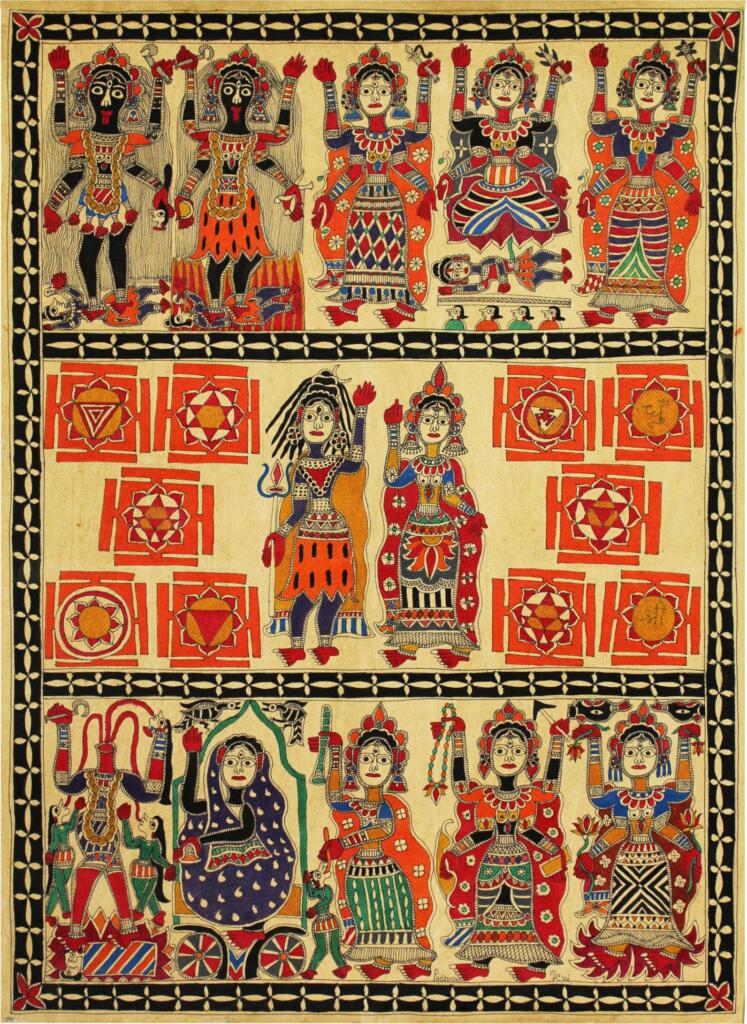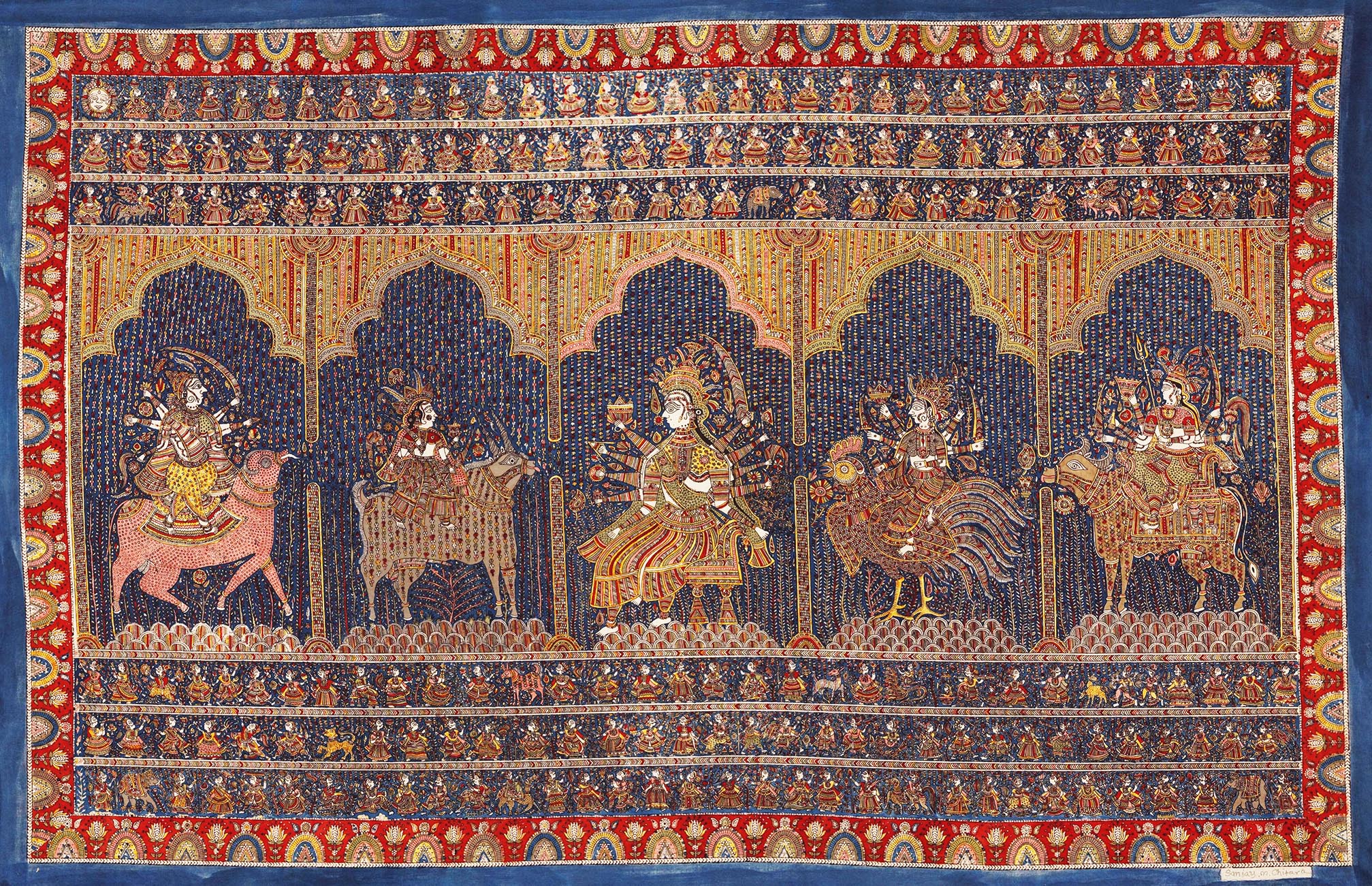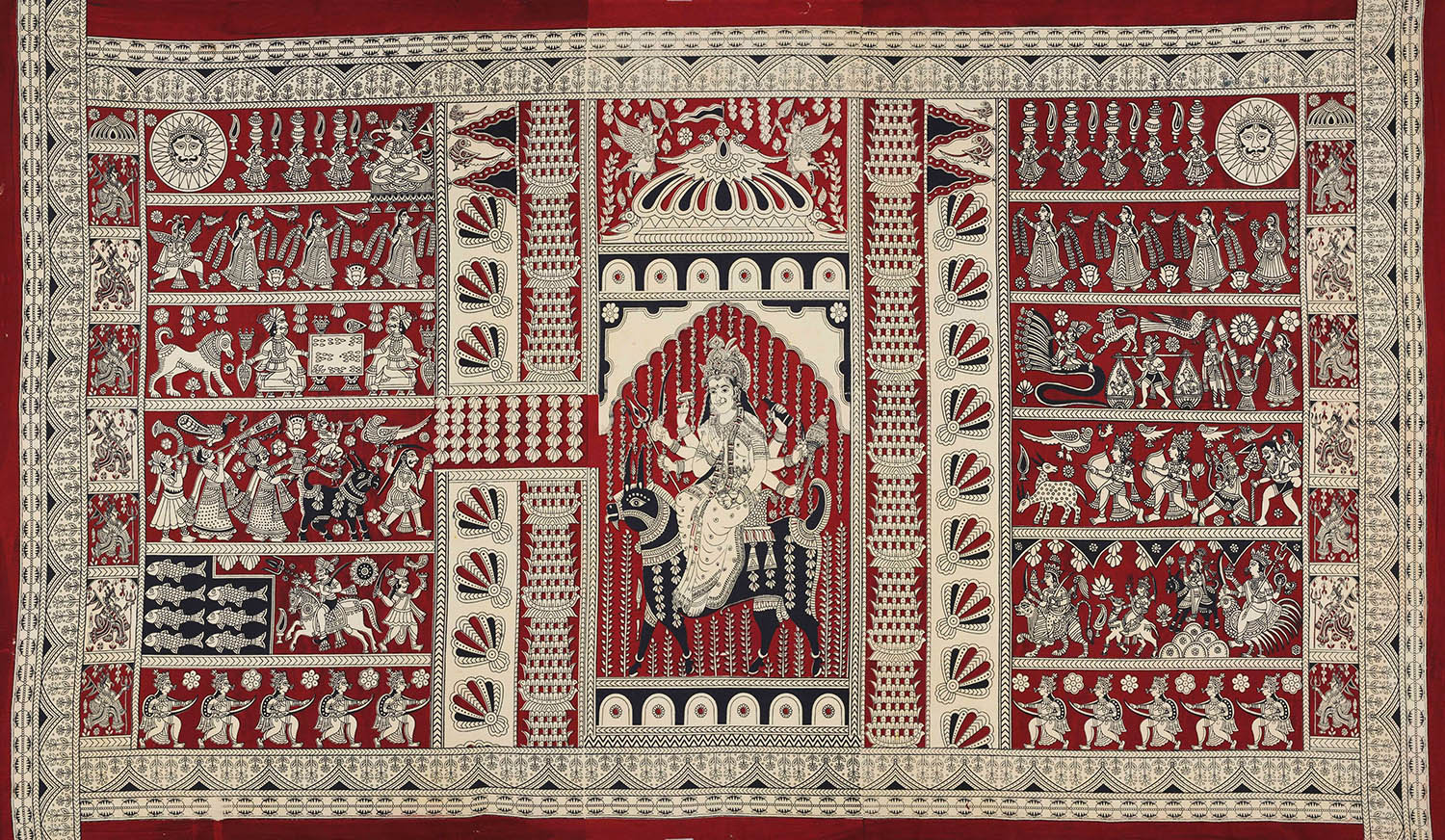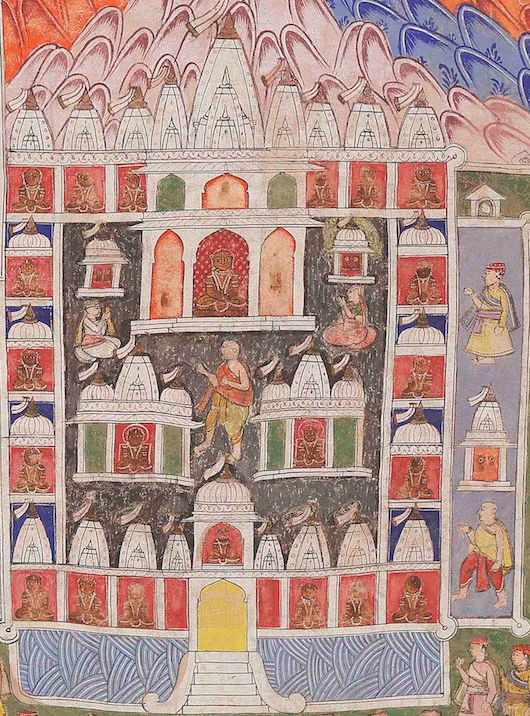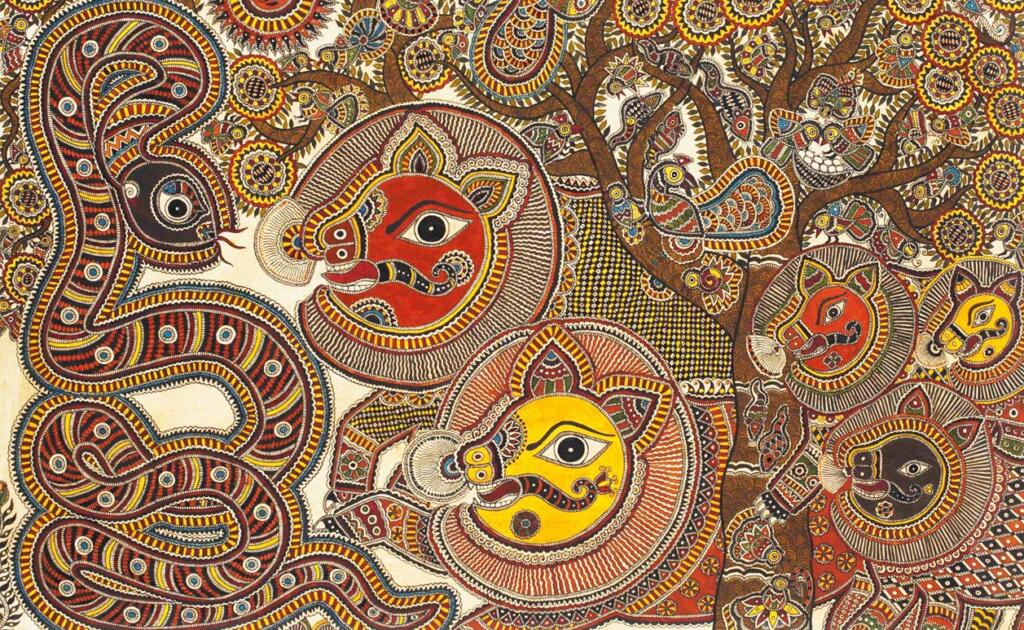
Colourful creepers of Madhubani painting snake all over the state of Bihar, intertwined with the cultural identity of the state. This art reveals so much about the spiritual anchors and domestic rhythms of the people of the historic region of Mithila. But to get under the skin of it, it helps to understand a little about its defining leitmotifs. Let’s look at a few of them.
Freshly Squeezed Colour
Making natural colours for a Madhubani painting is a deeply meditative act. From picking leaves, roots and flowers at dawn to grinding them on a silbatta to passing the pulp through a sieve, it’s all a labour of love. You can read more about how flowers lend their colour to a Madhubani canvas here.
Before the colour goes on, the canvas is coated with a thin layer of cow dung that acts as a natural pest repellant and helps the paint absorb better.
The colour black is extracted by rubbing coal on a wet stone. Artists apply colour with a handmade brush, which is a sharpened broomstick with cotton wrapped around its point.
Make A Fish
The fish is a very significant motif in Madhubani paintings. It’s both a religious icon—in Hindu mythology, Lord Vishnu takes the form of a fish to preserve world order—and a quotidian one. The many little ponds of Madhubani teem with fish and this is why the creature has come to symbolize fertility too. Mithila artists represent the fish in so many glorious, iridescent ways that we could build an entire art aquarium just around the theme!
What’s Tantra Got To Do With It?
A sub-genre among the Madhubani school is Tantrik painting. A painting might incorporate symbols of the cult or relate episodes from its mythology, like this work by Mithila artist, Poonam Devi. It depicts the Dasa Mahavidyas, the ten forms of Sati. The story goes that when Lord Shiva rejects an invitation to attend a yagna held by his father-in-law Prajapati Daksha, his wife Sati transforms herself into ten goddesses to show her wrath, anguish and power. In the painting, Shiva and Sati are depicted in the centre. They are surrounded by the goddesses Kali, Tara, Bhuvaneshwari, Tripura Sundari and Bhairavi in the panel above and Chinnamasta, Dhumavati, Bagalamukhi, Matangi and Kamala in the panel below.
Black Is The Warmest Colour
As a child, Santosh Kumar Das watched his mother gather soot from night lamps to make bold lines on canvas. This must have made a deep impression as black remains the artist’s favourite colour. In a genre bursting with brilliant hues, his works stand out for their starkness. Though his art explores modern techniques, his style still remains influenced by the traditional themes. Move the slider on the image below to see how a theme is interpreted by two Mithila artists. On the left, Anju Devi’s elephant couple meet under a canopy of rich colours. On the right, SK Das’s pair come together in a monochrome explosion.

